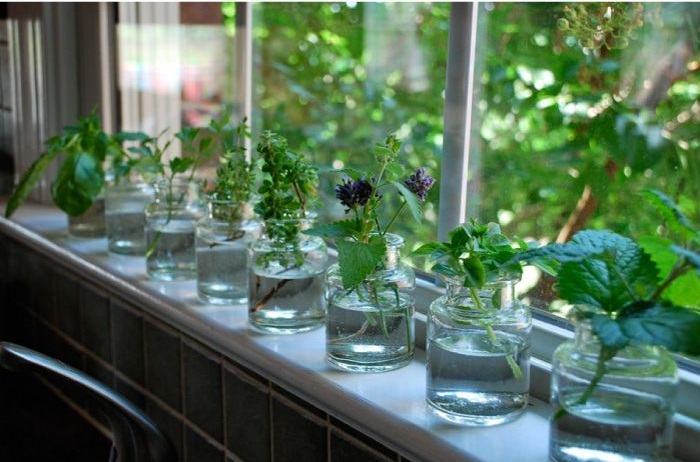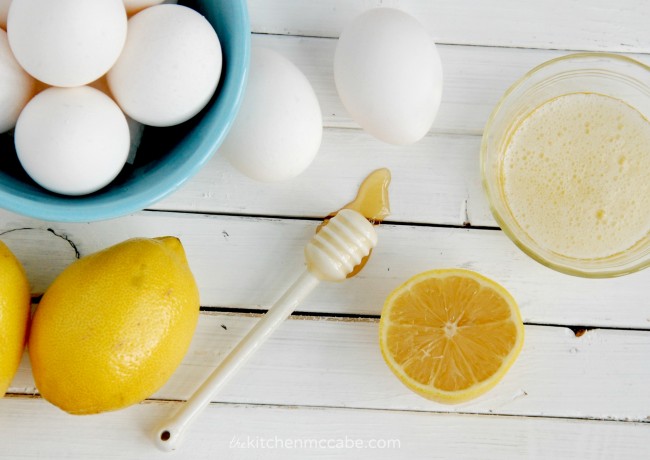Herbs provide many health and body benefits due to their medicinal, culinary and relaxation properties. However, they are not always available in gross condition throughout the year. To this end, why not grow some of them in our kitchen? In this way, you not only keep them handy, but it will provide a pleasant taste in your kitchen. Keep reading because you will learn in this article the technique of growing medicinal herbs in water.

This method of growing medicinal herbs in water does not include regular irrigation, soil or changing seasons. What you just have to do is place a certain herb in water and let it grow. Don’t worry; these herbs are as tasty as the ones grown in the garden.
However, it is necessary to sow, for example, sow mustard and coriander seeds in a soil and then transfer them to the water. You cannot transfer an herb from the soil to the water because the roots of the soil are different from the roots of the water.
How to grow medicinal herbs in water?
Water
You can place some cuts of herbs in glass bottles filled with pure water in order to keep them handy. Avoid chlorinated water, because chlorine chemicals can damage plant tissues. Instead, leave some tap water to aerate overnight or store some rainwater. The best solution is spring water because of the amount of minerals it contains.
Containers
As a container you can choose some glass bottles or jars type mason jars, or even plastic bottles. The roots do not like to be exposed to light so use some colored bottles, especially amber ones (or you can wrap a piece of paper around the bottle in order to create a dark space). The dark zone will prevent the growth of algae in the bottle and in the root. This will not affect the growth of the plant, but it will make the bottles look messy.
Narrow mouth containers can withstand cuts and keep them upright, but they should not be narrow or tight because the mouth of the container should allow the free transition of air for the roots to breathe.
Plant cuts
Soft cuts quickly take root in water without using rooting hormones. So, cut some 15-centimeter (6-inch) sections of the growing herbs and place them in the water containers. Remove the bottom leaves from the debris because there should be no leaves in the water. They can rot very easily thus damaging the water as in vases.
Some medicinal herbs such as rosemary cuttings can take longer to take root. In that case, change the water once a week, but be careful not to disturb the cuts. When the roots begin to grow, often between 2-6 weeks, water changes may not be necessary.
If you want to encourage Deeping, take some willow branches and place them in warm water overnight. They will provide a mixture of rooted hormone. In addition, you can use some rooting hormone powder; cinnamon is a natural way to achieve this, to avoid chemicals.
10 medicinal herbs that can grow in water
1. Mint
Herb carminative, anti-spasmodic, aromatic, diabetic, analgesic, anti-catarrhal, antimicrobial, emmenagoga, rubefaciente, stimulant. This popular mint is well known for its medicinal properties as well as for the high amount of the volatile substance menthol. Menthol gives a cooling sensation in the skin or tongue without causing any variation in temperature. This is one of the easiest herbs to be grown in water, just place some mint cuts in water.
2. Peppermint
Another type of mint. In fact, mint is a natural hybrid of peppermint.
3. Oregano
Antibacterial herb, anticancer, antioxidant, antispasmodic, antiviral, aromatic, carminative, stimulant. The leaves of these medicinal herbs are used with almost any vegetable. Therefore, take fresh pieces of oregano and place them in water. It pulls out the growth tips as the plant grows well.
4. Stevia
It can be used instead of sugar. It does not alter blood sugar levels and does not cause changes in cells. Suggested for weight loss diets, diabetes, hypoglycemia, hypertension, infections and pancreas support. It is good to have this type of herb at home in order to add to some drinks and teas. Take some cuts of actively growing Stevia branches and put them in water. Place the container in a warm place with as much light as possible.
5. Sage
Herb used in aromatherapy, for cellulite, colds, dental/oral care, deodorant, digestion, facial care, insect repellent and more. Take some cuts of this herb in the spring and put them in water. You don’t need more than 2 plants because very small amounts are needed for flavor. The grass needs a bright light and a well-aerated place because it is prone to mold.
6. Basil
Herb antispasmodic, galactogogogo, carminative, expectorant, mild sedative. It is the ideal herb that would grow in a container full of water and in a warm and closed place. Just provide basil with a good light. Place the basil cuts in water before they begin to bloom. This method of growing water is perfect if you want to preserve some varieties of basil during the winter.
7. Strag
Take some cuttings in the spring after a new growth appears. The fall ones are also good, but it will take time until the roots grow. It also needs warm place and bright light. There are certain varieties of strarag, French is better for culinary purposes, while Russian is soft, making it more appropriate for salads.
8. Lemon Balm
The taste of lemon is a pleasant perfume in every home, especially during the winter. Take some cuts in spring or fall. It is necessary to provide a warm place with bright, but indirect light for lemon balm. It may take 3-4 weeks until the cuts develop roots. It regularly changes the water if the plant is inside or you can keep it outside while the weather is still hot. Outside you can avoid the mold that lemon balm experiences. Take the cuts out in the open when they are well established. You can use the leaves to make tea.
9. Romero
Herb that serves as analgesic, antioxidant, antirumatic, antispasmodic, antiviral, aromatic, astringent, squatrisant, serves for circulation is diuretic, as muscle relaxant, as skin tonic, stimulant, stomach. It takes longer to root rosemary seeds, but if you take some new shoots in the spring, they can grow faster. This is an excellent houseplant that should be kept in a sunny place.
10. Thyme
Analgesic, antibacterial, anticancer, antifungal, antioxidant, antispasmodic, antitussive, antiviral, aromatic, depurative, expectorant and more. You need new cultivated cuttings that are green. The old one is brown and stiff so that it can take a while longer to take a while to take a while to take a place. Therefore, choose some in the middle of spring or early summer before it begins to bloom. Put the cuts in water immediately because they can dry out very quickly. It even sprays with water the part above. When it grows, it cuts the stems to improve branching.









